Volume 16, Issue 2
Displaying 1-20 of 20 articles from this issue
- |<
- <
- 1
- >
- >|
SPECIAL ISSUE
-
2010Volume 16Issue 2 Pages 85-92
Published: February 28, 2010
Released on J-STAGE: August 05, 2011
Download PDF (1165K)
PAPERS
-
2010Volume 16Issue 2 Pages 93-101
Published: February 28, 2010
Released on J-STAGE: August 05, 2011
Download PDF (1646K) -
2010Volume 16Issue 2 Pages 102-111
Published: February 28, 2010
Released on J-STAGE: August 05, 2011
Download PDF (1385K) -
2010Volume 16Issue 2 Pages 112-123
Published: February 28, 2010
Released on J-STAGE: August 05, 2011
Download PDF (4249K)
-
2010Volume 16Issue 2 Pages 126-127
Published: February 28, 2010
Released on J-STAGE: August 05, 2011
Download PDF (557K) -
2010Volume 16Issue 2 Pages 128-129
Published: February 28, 2010
Released on J-STAGE: August 05, 2011
Download PDF (251K) -
2010Volume 16Issue 2 Pages 130-131
Published: February 28, 2010
Released on J-STAGE: August 05, 2011
Download PDF (179K) -
2010Volume 16Issue 2 Pages 132-133
Published: February 28, 2010
Released on J-STAGE: August 05, 2011
Download PDF (238K) -
2010Volume 16Issue 2 Pages 134-135
Published: February 28, 2010
Released on J-STAGE: August 05, 2011
Download PDF (425K) -
2010Volume 16Issue 2 Pages 136-137
Published: February 28, 2010
Released on J-STAGE: August 05, 2011
Download PDF (122K) -
2010Volume 16Issue 2 Pages 138-139
Published: February 28, 2010
Released on J-STAGE: August 05, 2011
Download PDF (104K) -
2010Volume 16Issue 2 Pages 140-141
Published: February 28, 2010
Released on J-STAGE: August 05, 2011
Download PDF (271K) -
2010Volume 16Issue 2 Pages 142-143
Published: February 28, 2010
Released on J-STAGE: August 05, 2011
Download PDF (158K) -
2010Volume 16Issue 2 Pages 144-145
Published: February 28, 2010
Released on J-STAGE: August 05, 2011
Download PDF (165K) -
2010Volume 16Issue 2 Pages 146-147
Published: February 28, 2010
Released on J-STAGE: August 05, 2011
Download PDF (141K) -
2010Volume 16Issue 2 Pages 148-149
Published: February 28, 2010
Released on J-STAGE: August 05, 2011
Download PDF (45K) -
2010Volume 16Issue 2 Pages 150-151
Published: February 28, 2010
Released on J-STAGE: August 05, 2011
Download PDF (150K) -
2010Volume 16Issue 2 Pages 152-153
Published: February 28, 2010
Released on J-STAGE: August 05, 2011
Download PDF (278K) -
2010Volume 16Issue 2 Pages 154-155
Published: February 28, 2010
Released on J-STAGE: August 05, 2011
Download PDF (130K) -
2010Volume 16Issue 2 Pages 156-157
Published: February 28, 2010
Released on J-STAGE: August 05, 2011
Download PDF (118K)
- |<
- <
- 1
- >
- >|
